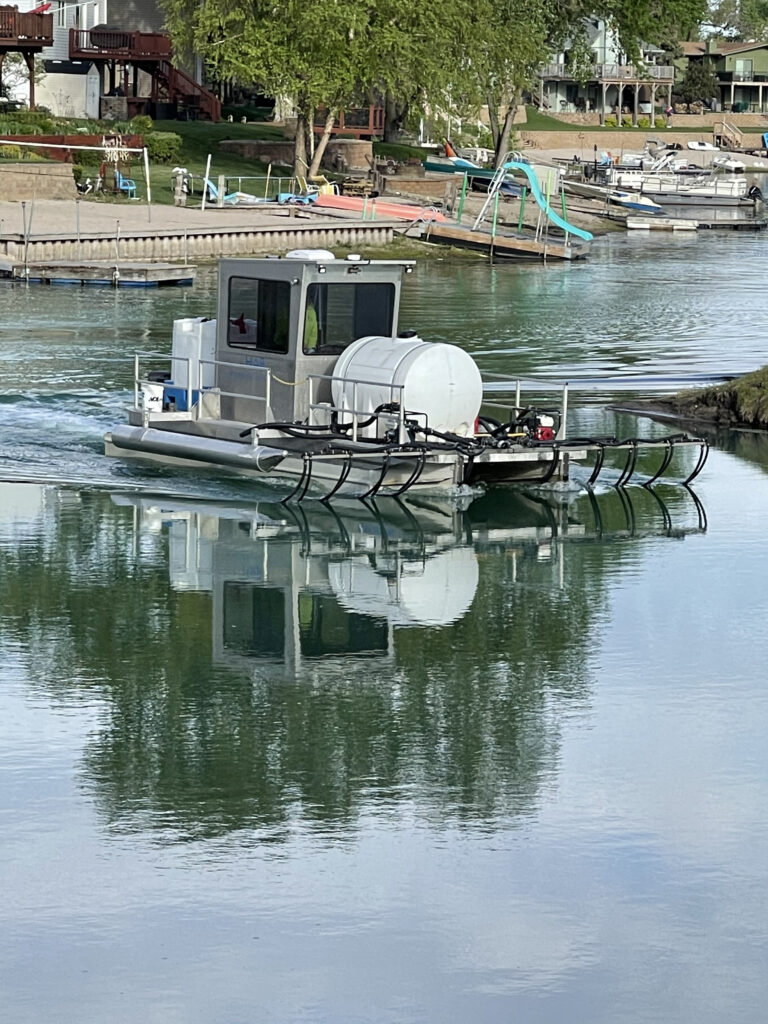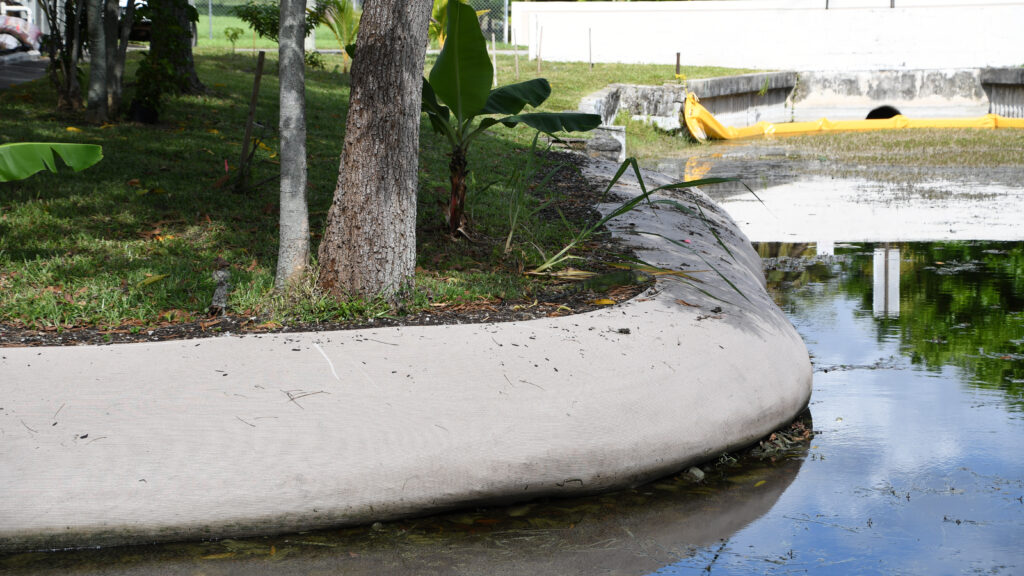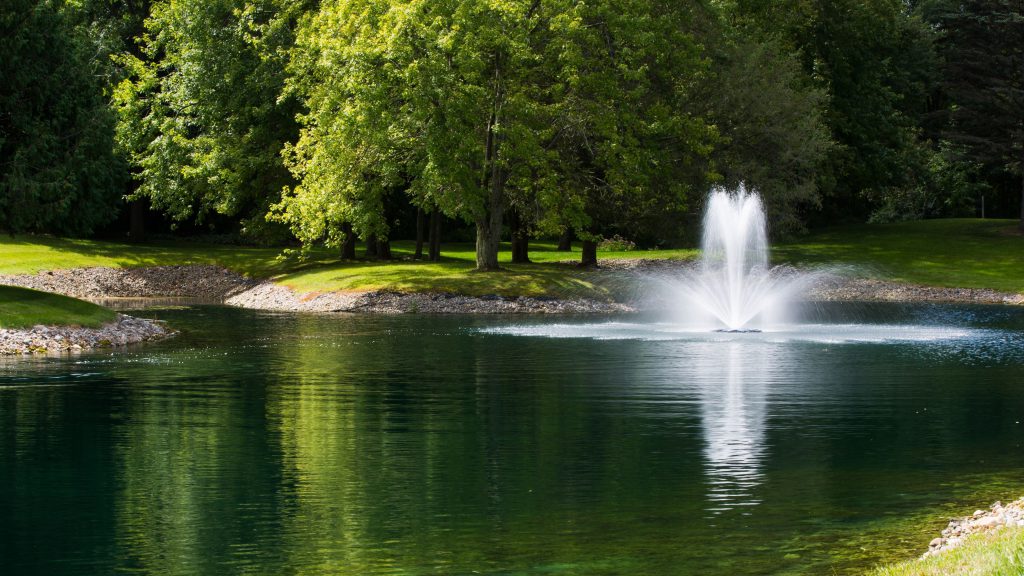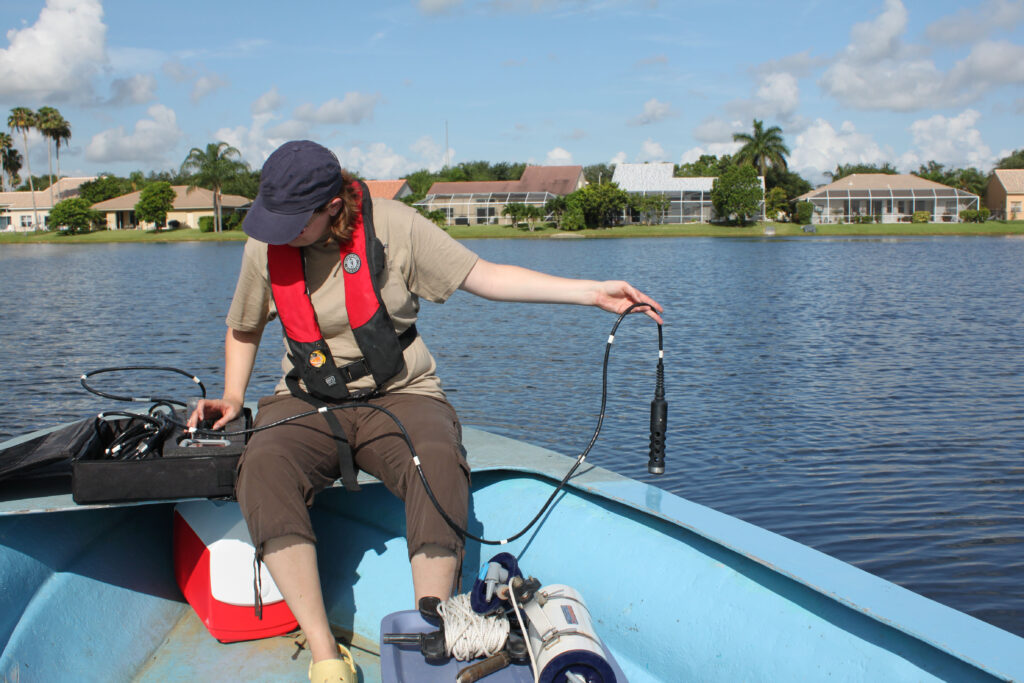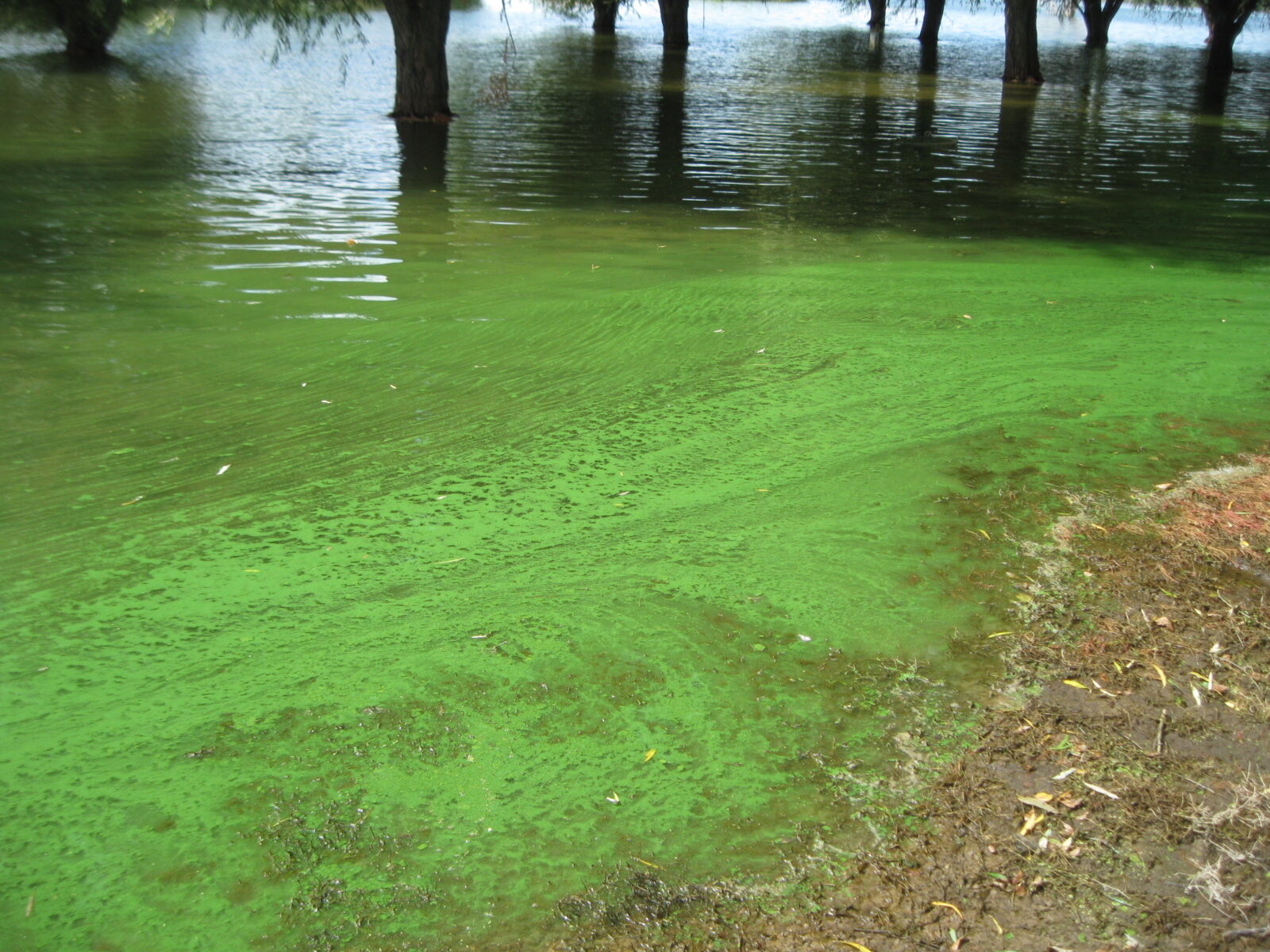
How Climate Change Is Fueling Algae in the Midwest & New England
If you’re from New England or the Midwest, you might remember a time when summers felt milder, when weather was less erratic, and when algae didn’t grow so stubbornly on lakes and ponds. This isn’t just rosy retrospection; these are symptoms of climate change. Significant shifts in temperature and precipitation, compounded by decades of urbanization, unsustainable farming, and pollution, are causing our nation’s waterbodies to become abnormally enriched with nutrients that fuel algae.
Changes In Water Quality In Northern States
States in the North and Midwest are experiencing some of the most dramatic changes. These regions have not always grappled with the severity of algal blooms seen in warmer southern states. Historically, cooler spring and Autumn months have perpetuated a condensed growing season; however, winter snow now melts earlier, resulting in warmer spring seasons and hot summer temperatures that persist well into Autumn. This extended period of warmth provides algae with a longer window to develop and thrive.

Spikes In Excess Nutrients
Increased nutrient levels further exacerbate this issue. Scientists warn that nutrient levels in U.S. waterways are projected to surge by 19% in less than a century, with the Northeast (28%), the upper Mississippi Atchafalaya River Basin (24%), and the Great Lakes basin (21%) facing the most substantial spikes.
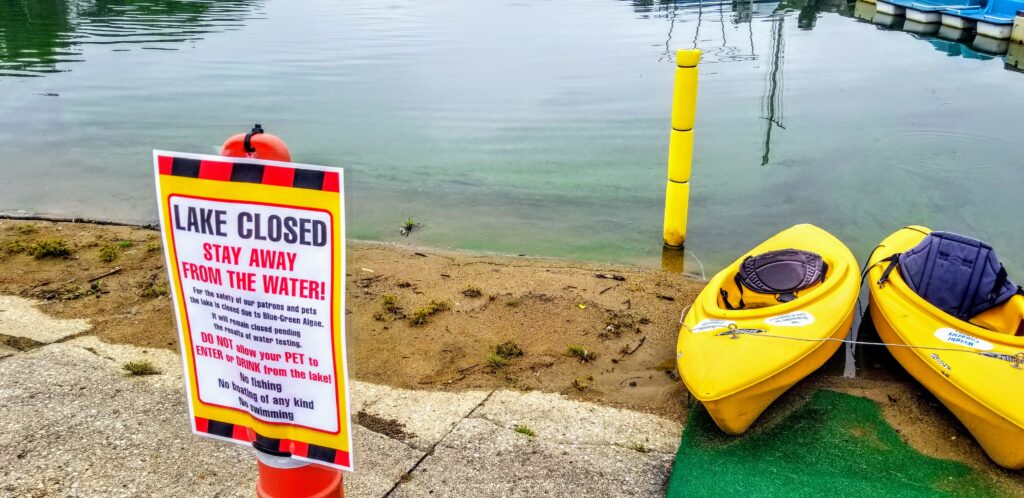
The Impact of Weather on Lake Health
Erratic weather events during the growing season may be a primary driver of this increase. Sustained droughts, followed by severe storms, are becoming more common. In fact, a large proportion of precipitation now occurs as intense single-day events. When torrential downpours flood the dry land, water is less likely to absorb into parched earth and can overwhelm stormwater systems designed to filter out nutrients and pollutants. Consequently, floodwater is diverted directly into the watershed, carrying with it nutrient-rich fertilizers, sediment, animal waste, and trash. The force of water on lake and pond shorelines can also cause soil to rapidly erode. This diminishes depth and volume, and may exacerbate flooding during subsequent events.
Climate Change and Algal Blooms
The implications of these decades-long changes are profound. Algal blooms not only degrade water quality, but also pose significant health risks. Cyanobacteria (blue-green algae) can produce toxins that are life-threatening to fish and many mammals, including dogs. Toxins may also contaminate drinking water sources, creating foul taste and odor compounds. Likewise, there may be a link between prolonged toxin exposure and the development of neurological diseases, such as Alzheimer’s, Parkinson’s, and Amyotrophic Lateral Sclerosis (ALS), according to the Centers for Disease Control (CDC) and Prevention.
Because nutrient loading is primarily influenced by human activities and weather patterns, it’s vital to incorporate proactive strategies that help mitigate these factors:
Nutrient Remediation
Though waterbodies of all sizes are vulnerable to nutrient pollution, excess nutrients like phosphorus can be more challenging to manage in large lakes due to their immense surface area and volume. Additionally, the ecological impacts of nutrient pollution in large waterbodies can be more significant due to their importance for drinking water, recreation, and tourism.
A variety of eco-friendly products can be introduced to convert excess nutrients to forms that do not sustain the growth of weeds and algae. One of the safest and most effective solutions for large lakes is aluminum sulfate (alum). Alum is a naturally occurring substance found in the earth that binds with phosphorus suspended in the water column. The floc that forms during this process then sinks to the bottom, creating millions of phosphorus-binding sites to block the release of additional phosphorus from the sediment. Water quality is restored to a more balanced state, and the positive results may last for several decades.
SOLitude’s team of experts has completed over 200 alum projects, improving over 35,000 acres of water. Our professionals also possess valuable insights about state-level grants available for water restoration and can guide you through the complex process of securing and correctly implementing approved services in line with funding requirements.
Water Quality Testing
Routinely testing and tracking dissolved oxygen (DO) levels, pH, nutrient concentrations, and other parameters can help professionals monitor nutrient levels, predict the onset of bloom, and safely intervene.
Vegetative Buffers
A shoreline buffer comprised of native vegetation acts as a natural filter, helping to trap excess nutrients and pollutants from stormwater runoff before they enter the water. Complex root systems also help contain sediment.
Bioengineered Living Shoreline
When shoreline sediment erodes into the water during rainstorms, it introduces additional nutrients and contributes to muck development. A bioengineered living shoreline can be constructed to add lasting stability and beauty.
Biological Bacteria
These beneficial bacteria foster healthy, balanced ecosystems by supporting desirable organisms and enhancing the decomposition of nutrient-rich organic materials.
Fountains and Aeration
Floating fountains, surface aerators, and submerged aerators help create more balanced water quality conditions by disrupting stagnant water and increasing beneficial DO levels.
Nanobubbles and Oxygenation
Other aeration solutions like nanobubbles are showing promise against algae. These microscopic bubbles remain in the water column for months at a time and may help naturally destroy cyanotoxins. A similar technology, side-stream oxygenation, can be used to directly inject oxygen into the water to correct deficiencies.
Mechanical Hydro-Rakes and Dredging
Muck and debris are significant nutrient sources that contribute to algae. Physically removing these materials via mechanical hydro-raking or spot dredging can help diminish available nutrients and restore precious water depth.
Education
We each play an important role in preventing water quality imbalances. Be sure to properly dispose of pet waste and trash, bag grass clippings and lawn debris, and limit the use of fertilizers. These small efforts can prevent excess nutrients and bacteria from entering nearby waterbodies and contributing to poor water quality.
How We Can Combat The Effects of Climate Change
The mounting nutrient loading and algae problems in the northern states are stark reminders of the far-reaching impacts of climate change. Facing these challenges can feel overwhelming, but an experienced lake management partner like SOLitude can provide essential support and knowledge to safeguard your waterbody and your property. As the environment undergoes rapid changes, our experts remain at the forefront of new technologies and strategies to protect our valuable waterbodies for you, your loved ones, and for future generations.
How to Manage Algae & Weeds
Contact Us to Maintain Balanced Water Quality
Call us at 888-480-5253 or complete the form below to connect with an aquatic management expert.
SOLitude Lake Management is a nationwide environmental firm committed to providing sustainable solutions that improve water quality, enhance beauty and preserve natural resources.
SOLitude’s team of aquatic scientists specializes in the development and execution of customized lake, stormwater pond, wetland and fisheries management programs. Services include water quality testing and restoration, algae and aquatic weed control, installation and maintenance of fountains and aeration systems, shoreline erosion control, muck and sediment removal and invasive species management. SOLitude partners with homeowners associations, golf courses, private landowners, businesses and municipalities. SOLitude Lake Management is part of Rentokil, a leading business services company, operating across the United States, Canada and Puerto Rico.
For more information, visit SOLitude Lake Management at solitudelakemanagement.com, and connect on Facebook, LinkedIn and Twitter.








